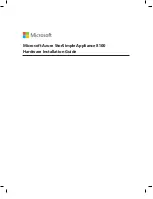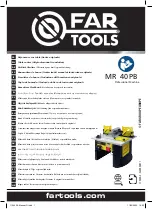
I N S T A L L A T I O N A N D M A I N T E N A N C E M A N U A L
T s u n a m i
F A M I L Y
F A S T E T H E R N E T W I R E L E S S B R I D G E S
J U N E 1 9 9 9
SECTION 3: INSTALLATION & ADJUSTMENTS
PAGE 3-19
3.9
Transmission Line Connection
The transmission line feeder (such as LDF4-50 1/2 inch coax cable or EW-52 elliptical
waveguide) should be prepared first by cutting to the approximate length (allowing some excess)
and installing the appropriate connector on the antenna end.
The prepared transmission line is then pulled through the cable ducts, trays or conduit (as
required) to the antenna, while being careful not to kink or damage the transmission line in any
way.
The transmission line should be supported in a tray on horizontal runs and by hangers on vertical
runs. Hangers should be spaced according to the manufacturer’s instructions (typically every 5
feet under conditions of no ice and not greater than 85 mph winds).
The transmission line should be grounded using the manufacture’s recommended grounding kit.
Grounding kits attach to the outer copper conductor. Grounds must be installed at the antenna, at
the bottom of the tower (if applicable) and where the transmission line enters the building. Long
transmission line runs should be grounded every 100 feet. In areas of high incidence of lightning,
dissipaters should be attached to antennas. In addition, coaxial, in-line, spark-gap type, lightning
suppressors should be added at the bottom of the coax cable before entering the
building/enclosure.
Any in-line lightning protection device must be rated for the
operating frequency of the Tsunami (5.3/5.8 GHz).
After installation, the transmission line is terminated with an N-type male connector/adapter
attached at the equipment end. For waveguide, this typically requires a CPR-to-N adapter.
Prior to operation, the electrical integrity of the transmission line, including all connectors, can be
checked with a simple DC check between the center conductor and outer conductor. (This is
neither possible, nor required for waveguide).
The transmission line should ideally be connected directly to the antenna at one end and to the
Tsunami
antenna port at the other end. However, short RG-214 type pigtail jumper cables may be
required to avoid sharp bends in the transmission line to limit stress on either connection.
7/8 inch coax cable or larger is not recommended for use at 5.3
GHz and higher frequencies.
Do not use right angle N-type connectors with the 5.3 or 5.8
GHz Tsunami radios: they may present high loss at 5.3 or 5.8
GHz. Do not use a low quality N-type jumper cable with the
Tsunami. Some cable types, such as RG-8, may have too high
a loss at 5.3 and 5.8 GHz.
Summary of Contents for Tsunami series
Page 1: ...INSTALLATION AND MAINTENANCE MANUAL WIRELESS FAST ETHERNETBRIDGES 5 3 AND 5 8 GHz UNII LE LAN...
Page 2: ......
Page 14: ......
Page 34: ......
















































